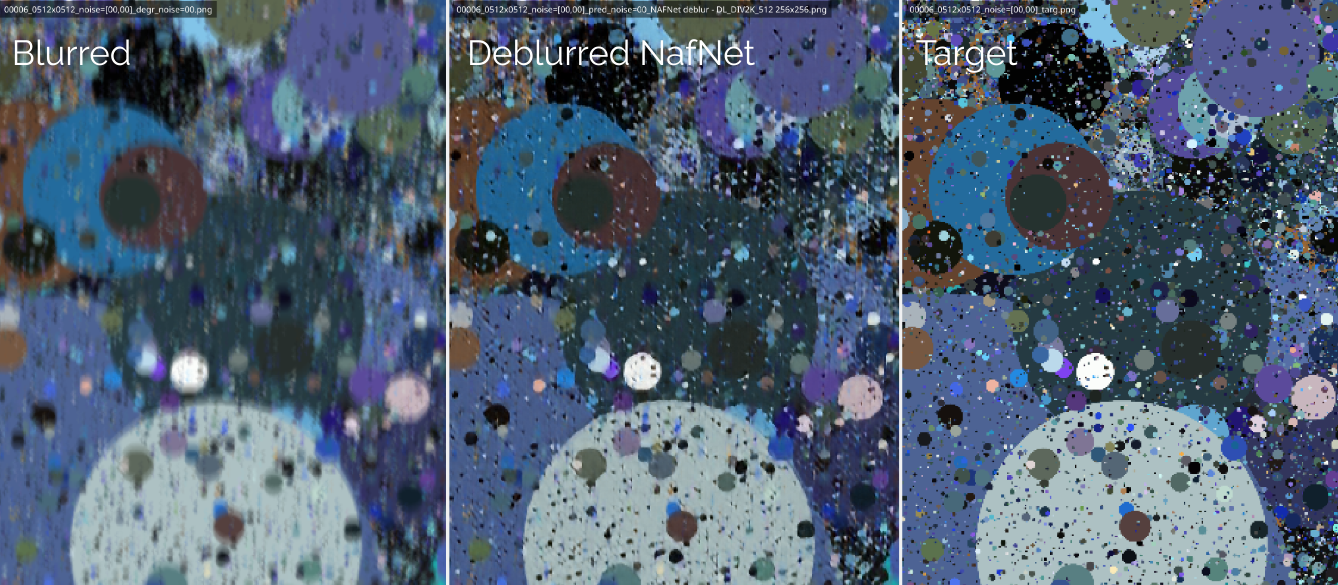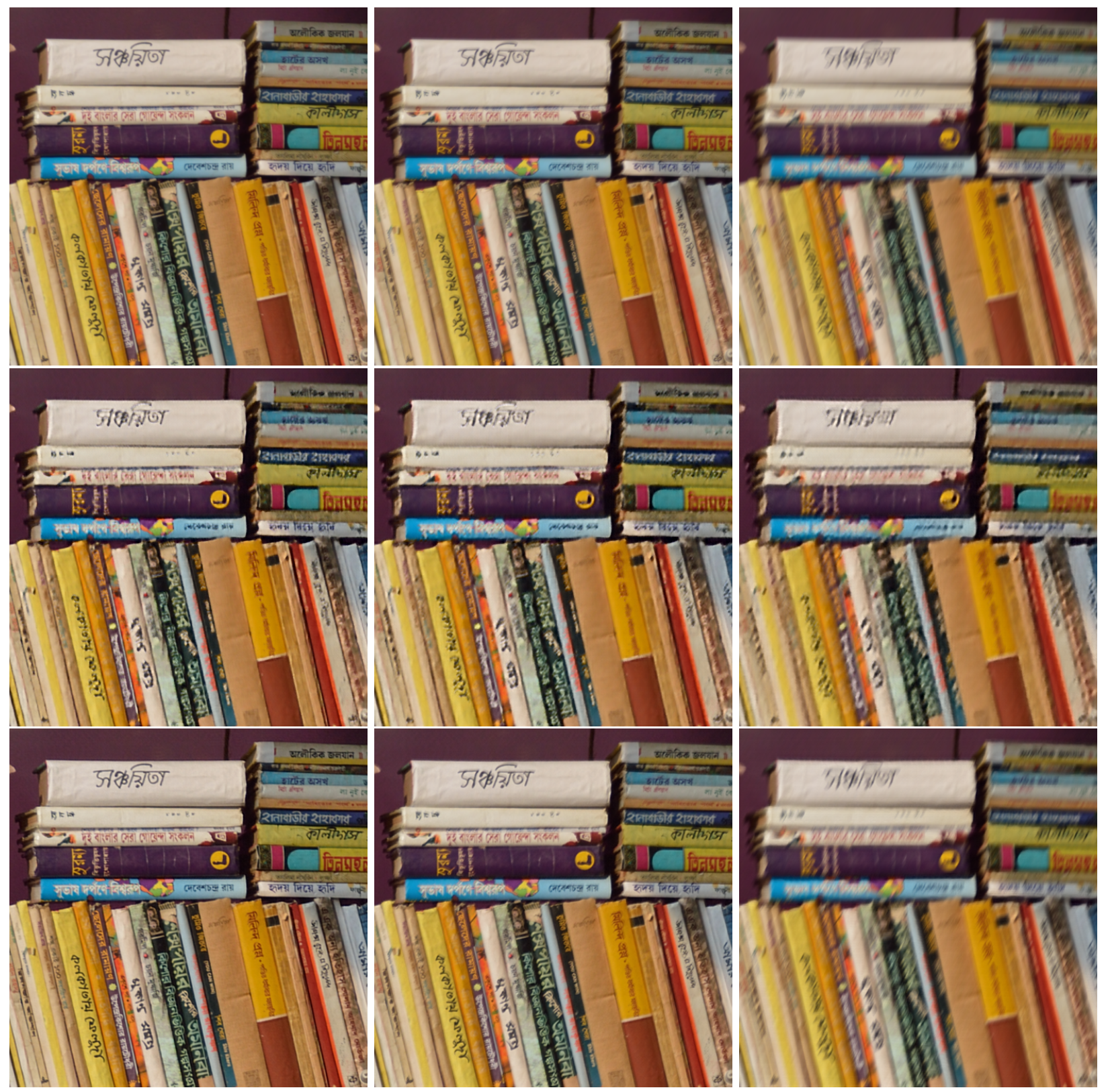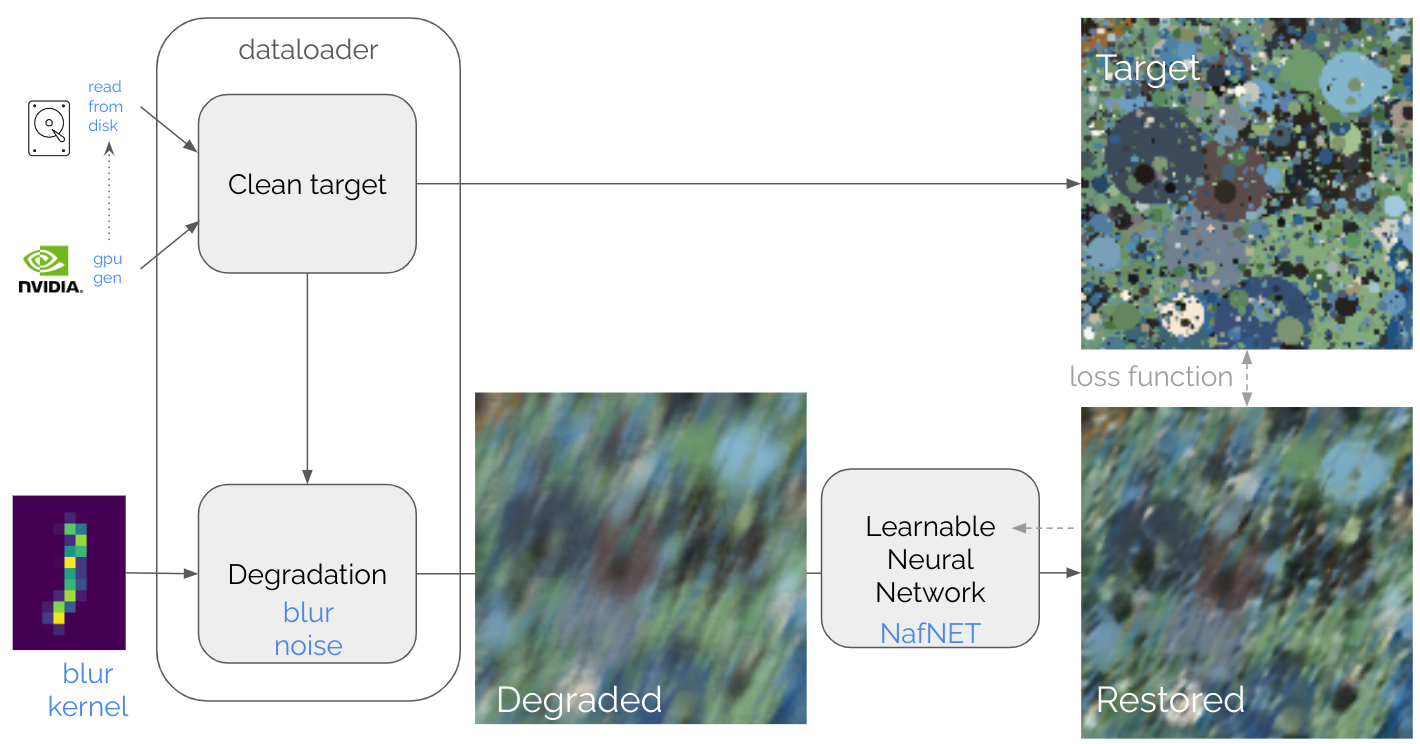MVA project 2024 on image restoration
- Jamy Lafenetre
- Balthazar Neveu
In the paper Synthetic images as a regularity prior for image restoration neural networks by Raphaël Achddou, Yann Gousseau, Saïd Ladjal, it was shown that a deep neural network can be trained for denoising solely from synthetic dead leave images and does perform relatively well on natural images.
We propose to explore several tracks:
- Use a NAFNET architecture
- Extend deadleaves with extra primitives (lines, diamond shapes, colored gradients)
- Try to see if the generalization property to natural images observed in denoising holds for deblurring.
We first validated that NAFNet trained on deadleaves performed well on the blind denoising task. Below you can see that it also performs correctly on natural images, although the performances are not as good as a network purely trained on natural images.
| Qualitative results at SNR in = 20dB | Quantitative results |
|---|---|
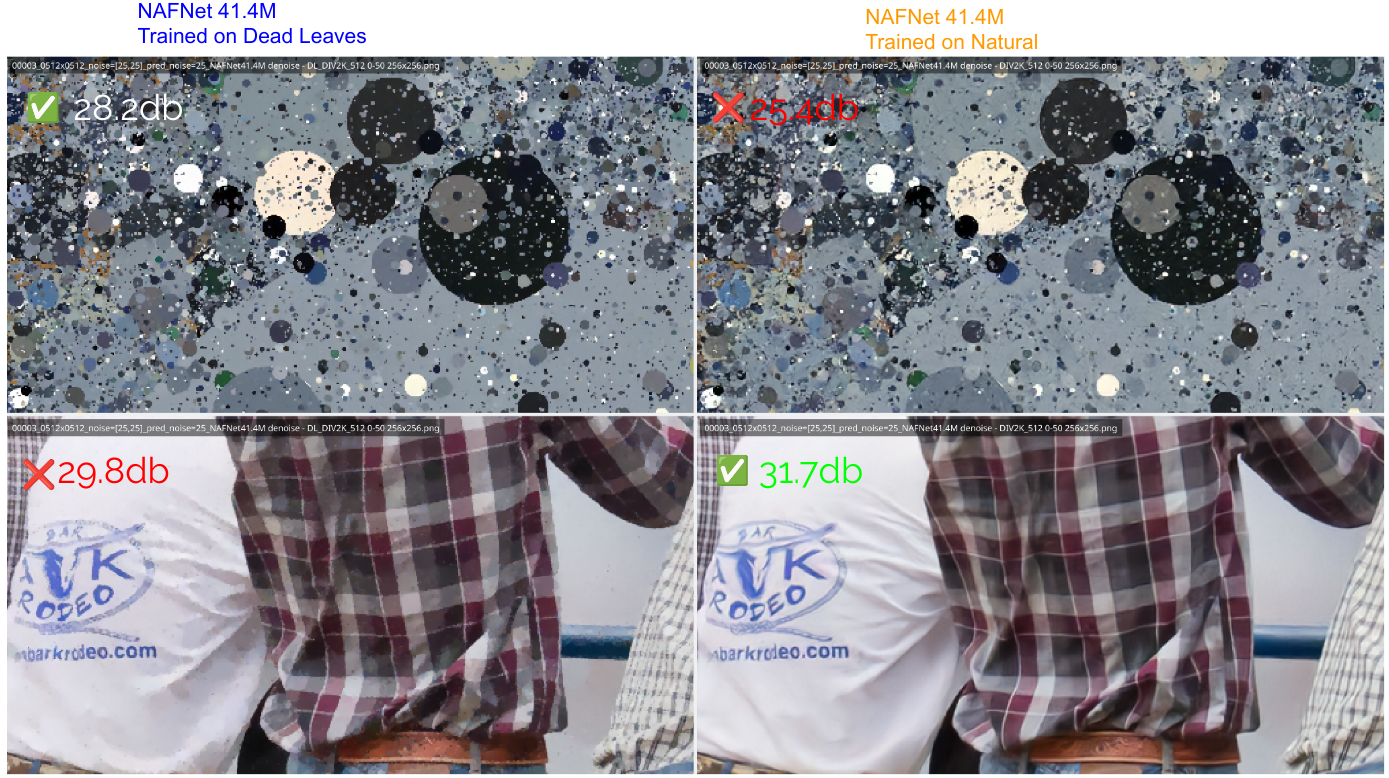 |
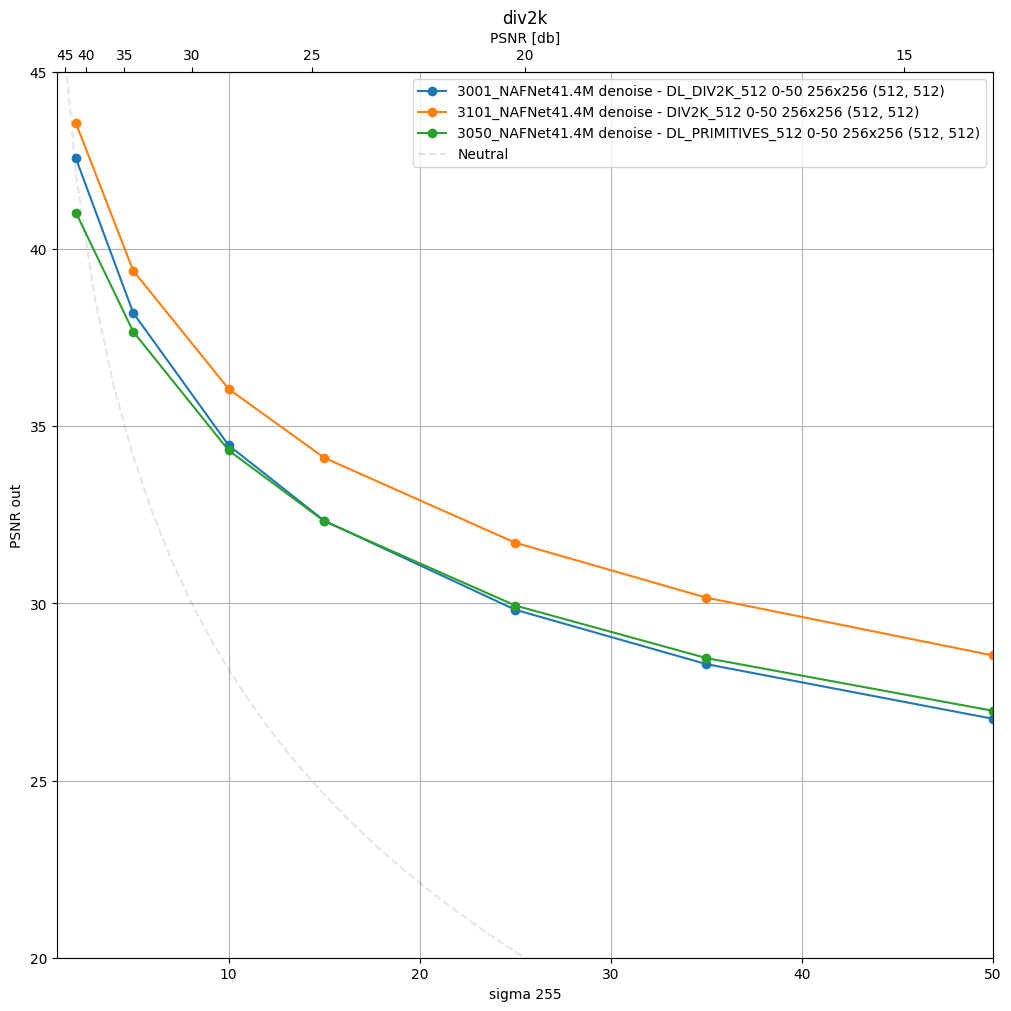 |
Finally, when applying the deadleaves training to the blind deblurring problem, one of the advantage we have notticed is that the network always tries to deblur even when the level of blur is high. On the contrary, when trained on natural images, the NAFNEt does not work so well when the blur level is too big.
Conclusion :
- Using extra primitives to pure deadleaves seems like a good idea but did not bring as much as we'd expected. A rework by adding anisotropy and extra geometric shapes could lead to significantly better results.
- Training on deadleaves images brings a lot of stability in trainings (as the image distribution is basically always the same, providing a fair amount of learning signal) and can be seen as a good pretext task before to the real dataset.
git clone https://github.com/balthazarneveu/blind-deblurring-from-synthetic-data.git
cd blind-deblurring-from-synthetic-data
pip install -e .
pip install interactive-pipe
pip install batch-processing- Additive White Gaussian Noise denoising
- Basic anisotropic Gaussian deblur
- Blind motion deblur
- Stacked convolutions baseline
- NAFNet
- Images read from disk
- Endless Live generation of deadleaves using a cuda based numba kernel.
Generate deadleaves: python scripts/save_deadleaves.py -n deadleaves_primitives_div2k_512
- Quick debugging / Local
python scripts/train.py -e -1 -nowb - Local training. Define experiments in experiments_definition.py
python scripts/train.py -e 1000🔑 After setting up your kaggle credentials (scripts/__kaggle_login.py as explained here)
python scripts/remote_training.py -e 1000 -u username -pFor remote training, datasets will be automatically available under Kaggle.
Available on Weights and Biases
Compare several models with a live inference
python scripts/interactive_inference_synthetic.py -e 1000 1001python scripts/interactive_inference_natural.py -e 1004 2000 -i "__kodak_dataset/*"- Compare 2 models (1004 = stacked conv) versus (2000 NafNet)
- At various noise levels (random range of standard deviation between (a,b) - so (5,5) simply means
$\sigma=5$ for instance). - At various sizes (*results may depend on the input size due to receptive field considerations).
- Limit the number of images (pretty stable for deadleaves)
-n 5
python scripts/infer.py -e 1004 2000 -o __inference -t metrics --size "512,512 256,256 128,128" --std-dev "1,1 5,5 10,10 20,20 30,30 40,40 50,50 80,80" -n 5Please refer to check how to aggregate results afterwards metrics_analyzis.ipynb.
Infer with deblur
python scripts/infer.py -e 5000 -o __inference/deblur -t metrics --size "512,512" --std-dev "0,0" -n 2 --traces all --dataset div2k -bIt is even possible to freeze blur kernel indices --blur-index 8 12 17 in order to get the metric with a fixed amount of blur.
